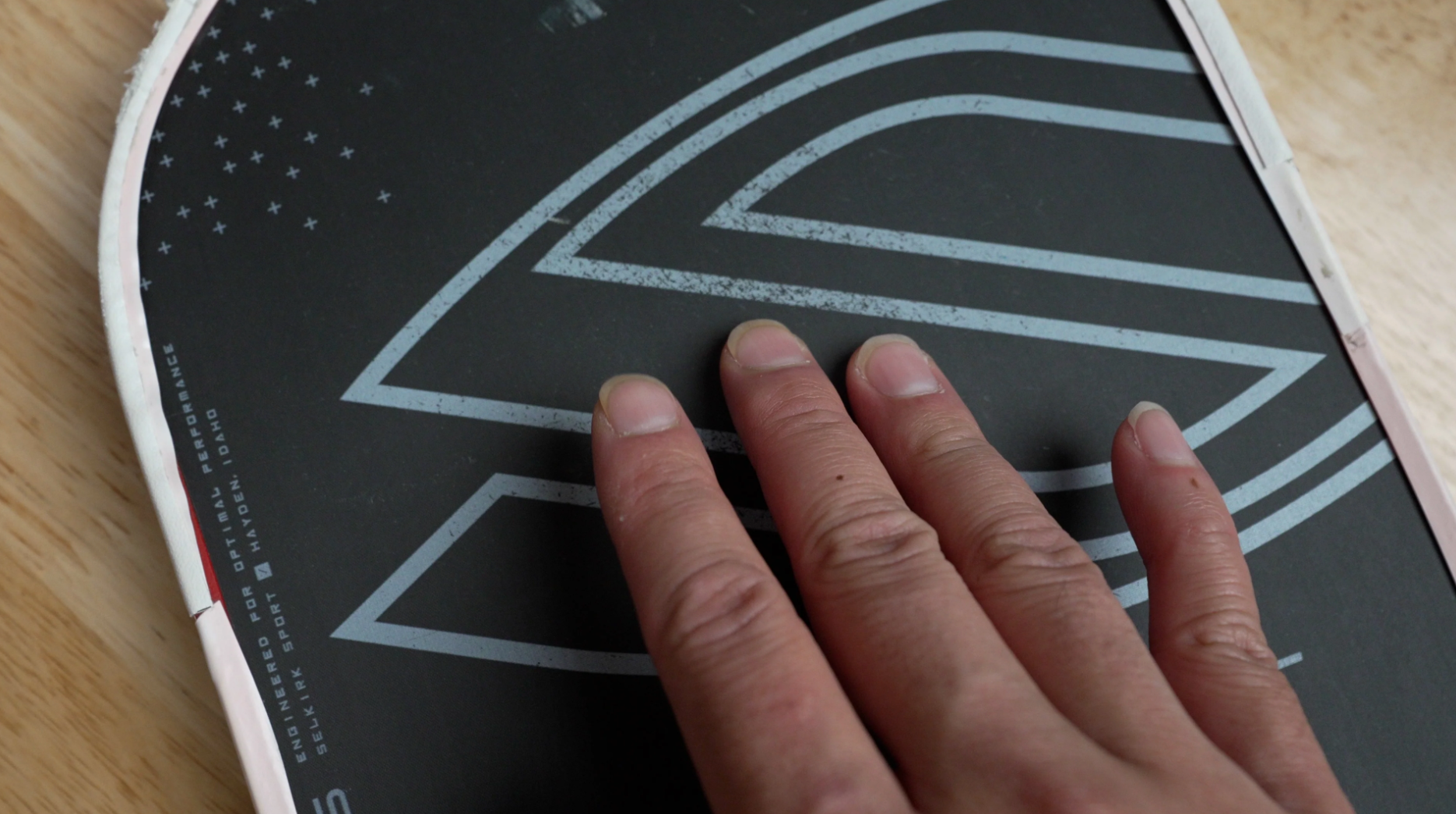At its essence, core crushing refers to the structural failure of a pickleball paddle's core.
When core crushing occurs, the honeycomb polypropylene structure found in many pickleball paddles loses rigidity and essentially collapses inward.
Manufacturing origins vs. gameplay fatigue
Core crushing typically occurs after one of two events: repeated, high-impact gameplay or during intense heat and pressure as part of the manufacturing process.
-
Manufacturing-induced core collapse often stems from loose tolerances in core sizing or poor-quality materials. If manufacturers do not follow strict processes, parts of the core can get crushed by heat and pressure during the molding process. Unfortunately, this quality control error is not always detectable until failure presents during play.
-
Progressive degradation happens after repetitive ball strikes. While some degradation is to be expected, when core crushing occurs, the once-rigid paddle turns into a soft, mushy core.
What happens to the glue and bonding?
Core collapse isn’t only about the honeycomb structure; it's about how the paddle's multi-layered anatomy interacts:
-
The adhesive layers between the face and core can lose integrity if the paddle's internal structure shifts. As core crush progresses, stresses within the paddle can loosen bonds, even leading to disbonding.
-
Environmental exposure — like heat, humidity, or storage in hot cars — accelerates glue breakdown. The heat causes the paddle's materials to expand and contract, putting undue strain on the adhesive.
Are certain cores more prone to core crush?
-
Polypropylene honeycomb: Is a lightweight option that is initially responsive. However, these cores — particularly in Gen-2 and Gen-3 paddle designs — are prone to breakdown.
-
Foam cores (Gen‑4 and beyond): Dense, solid-core designs vastly reduce the risk of structural collapse because they offer long-term structural stability and consistent behavior.
Detecting core crushing
Core crushing can be a little harder to discern from other paddle failures because the signs are more subtle. Those in the know typically use one of the following tests:
-
Tap test: Listen for a dull or muted tone (versus a crisp, uniform “thwack”), which can be an indicator of dead spots.
-
Bounce test: Drop a ball on the paddle face and look for inconsistent rebound patterns across the surface. If the ball does not rebound at all, you likely have a dead spot in your paddle.
-
Crunch test: Apply gentle pressure in the sweet spot. If you hear a subtle “crunch” or the paddle face gives inward, you have a weakening core.
What does core crushing mean for play?
Because core crushing is a paddle failure, you can expect your gameplay to take a hit.
-
Performance: Expect deadened pop, loss of power, and erratic consistency. The paddle becomes less predictable and often, more frustrating.
-
Safety: Unlike delamination, which can produce trampoline-like power surges, core crushing dulls the paddle. It’s technically legal but performance‑negative.
-
Longevity: Core failures don’t happen overnight. They creep in via micro-failures, aging adhesive, and cell collapse. Data shows many paddles begin to wear out 6–12 months after regular use.
What the tech‑savvy player can do
There are a few ways to extend a paddle's life, particularly when considering core crush.
-
Choose smarter cores: Foam-filled paddles are the latest engineering solution, so consider trading in your honeycomb core.
-
Minimize thermal and moisture stress: Store your paddle in temperature-controlled rooms, not in hot cars or humid environments.
-
Test and document: Regularly perform tap, bounce, and crunch tests. Record results across paddles and play sessions for comparison.
-
Rotate paddles: Spread the stress load if you game hard. Using multiple paddles, even if they're the same model, can delay failure.
-
Inspect visuals: Even without broken cores, edge chipping or wear can lead to localized crushing later.


